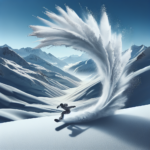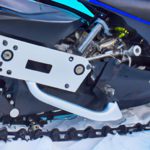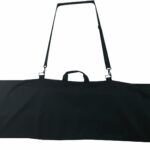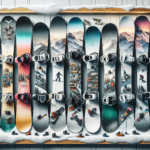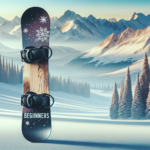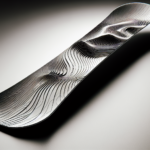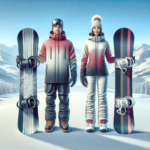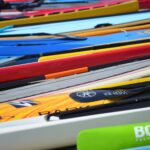Snowboarding is a thrilling sport loved by many, and if you’re gearing up for your next winter adventure, it’s crucial to know what type of board suits your style. In the world of snowboarding, there are three primary types of boards: freestyle, all-mountain, and freeride. Each type has unique features designed for specific terrains and techniques. Let’s take a closer look at what distinguishes one from the other so you can choose the perfect gear for your trip down the slopes. Uncover the distinctions and advantages of each kind, readying you for the best snowboarding experience.
Understanding the Basics of Snowboarding
Definition of snowboarding
Snowboarding is a winter sport that involves descending a snow-covered slope on a snowboard — a flat board with bindings where you can secure your feet. It’s like surfing, except you glide across the cold, snowy surface instead of warm, gentle waves.
History of snowboarding
Snowboarding started as a niche activity in the 1960s in the USA but has since globe-trotted its way into wondrous popularity, now considered a pinnacle winter sport. It was first made inventor Sherman Poppen’s simple idea of connecting two skis for his kids, leading to the creation of “snurfer” (snow-surfer). Fast-forward to 1998, snowboarding was introduced to the Winter Olympics, cementing its status in the world of sports.
Purpose and use of snowboards
Your snowboard is your mode of transportation on the snow-covered mountains — it’s where skill, style and speed come together. As snowboarding techniques and tricks have evolved, so have the assorted types of snowboards, each designed for a specific kind of snowboarding.
All-Mountain Snowboards
Overview and definition
All-mountain snowboards are the jack-of-all-trades within the snowboarding world, designed to perform in all facets from groomed runs to powder. They are highly versatile and made to tackle pretty much anything you throw at them.
Ideal conditions for usage
These boards are your go-to’s on days when conditions are ever-changing. May it be an early morning groomer, afternoon moguls, or a powdered secret spot you’re fond of, an all-mountain snowboard has got you covered.
Advantages and disadvantages of all-mountain snowboards
All-mountain snowboards are fantastic due to their versatility. They combine elements from other types of snowboards to help you adapt to different terrains. However, while they are good at many things, they are not specialized. Those who prefer a specific kind of riding might find a more focused board is preferable.
Freeride Snowboards
What are Freeride Snowboards?
Freeride snowboards are for those adventurous at heart. They are designed for off-piste and backcountry descents, perfect for riders who prefer ungroomed terrains and untracked snow.
Types of Freeride Snowboards
You’ll find diverse designs in freeride snowboards, each one tailored to specific types of terrain and snow conditions. You’ve got boards designed for deep powder, steep mountains, and even cliff lines.
When to use Freeride Snowboards
Freeride snowboards come into play when you have an adventurous off-piste day planned. They can champion over untouched deep snow, forest lines, and all sorts of natural features you’d find in the backcountry.
Benefits and limitations
The main benefit of freeride snowboards is their ability to offer excellent flotation in deep snow and stable high-speed descents. However, they can be less forgiving and difficult to handle for beginners.
Freestyle Snowboards
Understanding Freestyle Snowboards
Freestyle snowboards are synonymous with creativity and performance, designed for riders who love to showcase their skill in parks and halfpipes, executing daredevil tricks and flips.
Distinct features of freestyle snowboards
These boards have a twin design—meaning they are symmetrical from tail to nose—making them ideal for jumps and tricks involving switch riding. Lightweight and short length make them highly maneuverable.
Ideal places for freestyle snowboarding
Freestyle snowboards shine in snow parks and halfpipe runs. Essentially anywhere that enables stunt-filled, exhilarating performances.
Pros and cons of freestyle snowboarding
Freestyle snowboards are fantastic for individuals looking to pull off tricks. However, they are often not suitable for high speed or varied terrains given their softer flex and shorter length.
Powder Snowboards
Defining powder snowboards
Powder snowboards are built with one thing in mind: to help you glide over fresh, untracked snow. These boards are designed for the best floatation on those coveted deep snow days.
Characteristics of powder snowboards
Typically, these boards have a wider nose, a tapered tail, and the bindings are set back to allow easier lift in deep snow.
Ideal powder snowboarding conditions
Powder boards are perfect for deep, fresh snow conditions. They deliver the unique sensation of surfing on snow, perfect for powder-filled backcountry or off-piste adventures.
Advantages and disadvantages of powder snowboards
The main advantage of powder snowboards is their precise ability to float on deep snow. Conversely, their specialized design is often not ideal for groomed runs or tricky terrains.
Splitboard Snowboards
Definition of splitboard snowboards
A splitboard gives you the best of both worlds – it’s a snowboard on the ride down and splits apart into skis for the climb up; a dream come true for backcountry explorers.
How splitboards work
Splitboards break down into two separate halves, creating “climbing skis” to ascend slopes. Once at the top, you reconnect the halves to form a snowboard for your descent.
When and where to use splitboards
Splitboards enable access to remote areas for backcountry riding where a standard snowboard can’t take you. For any adventurous soul who loves ascending routes and diving into off-piste powder snow territory, a splitboard is a perfect companion.
Pros and cons of splitboard snowboards
Splitboards give riders the freedom to explore untramped terrains, beyond the reach of lifts. However, the complex setup and need for additional gear can intimidate beginners.
Alpine Snowboards
Understanding alpine snowboards
Alpine snowboards, also known as carving or race boards, are designed for carving turns on groomed runs and performing at high speeds.
Features of alpine snowboards
These snowboards are long, narrow, rigid, have a pronounced sidecut, and are typically ridden with hard boots to improve control at high speeds.
Ideal conditions for alpine snowboarding
Alpine snowboards are best suited for groomed runs and clear conditions. Here, you can carve deep turns and reach high speeds, enjoying a flowing, rhythmic ride.
Advantages and limitations of alpine boards
Alpine snowboards offer great control and speed, a delight for carving enthusiasts. However, they are not versatile enough for other snowboarding styles and are unusable in terrain parks or deep snow.
Carving Snowboards
Introduction to carving snowboards
Carving snowboards are a thing of beauty. Built to carve clean turns on groomed runs, these boards let you etch precise lines into the snow.
Key features of carving snowboards
Carving snowboards are generally longer, enjoy a deep sidecut, and have a stiffer flex to render excellent edge hold and precise turn initiation.
When to use carving snowboards
Carving snowboards are the pros at groomed slopes, ideal when the conditions are hard-packed or icy. Their design lets you carve turns with control and speed.
Benefits and drawbacks of carving snowboards
Carving boards bring joy to hard snow conditions as they take the turns like a champ. However, their designated design puts them at a disadvantage in deep snow and in tackling obstacles like jumps or rails.
Women’s Snowboards
Defining women’s snowboards
Women’s snowboards are designed specifically to match the typical weight, height, and shoe size differences of female riders. This makes them more approachable and suitable to a lady’s snowboarding needs.
Women’s snowboard designs and features
Generally, these boards have a narrower waist width, lighter weight, and a softer flex. They ensure a perfect set-up that allows an effortless turn initiation, better control, and feel for female snowboarders.
Benefits of Women’s snowboards
Women’s snowboards offer better responsiveness and maneuverability for female riders, granting an overall more enjoyable and comfortable riding experience.
Limitations of women’s snowboards
Sometimes, some expert women riders may find these boards overly soft or narrow for their liking, especially if they are into hard charging or larger boot sizes.
Kids’ Snowboards
Understanding kid’s snowboards
Kids’ snowboards are designed to allow young learners to fall in love with snowboarding. They are lightweight, easy to control, and come in various fun graphics to appeal to younger riders.
Design aspects and distinct features
Kids’ snowboards boast a softer flex, shorter length, and smaller waist width suitable for their shorter height and smaller boot size.
Benefits of kids’ snowboards
Easier to maneuver, these boards give young riders the confidence to learn and progress in snowboarding. With fun designs, kids will be stoked about the whole snowboarding experience.
Challenges associated with kids’ snowboards
In general, kids’ snowboards are perfect for their intended consumer. However, as young riders grow and develop their skills, they’ll eventually need to transition to a larger, more performance-oriented board.
- What Snowboard Bindings Should I Get? - January 23, 2024
- What Size Screws For Snowboard Bindings? - January 23, 2024
- How To Snowmobile On Water? - January 23, 2024

